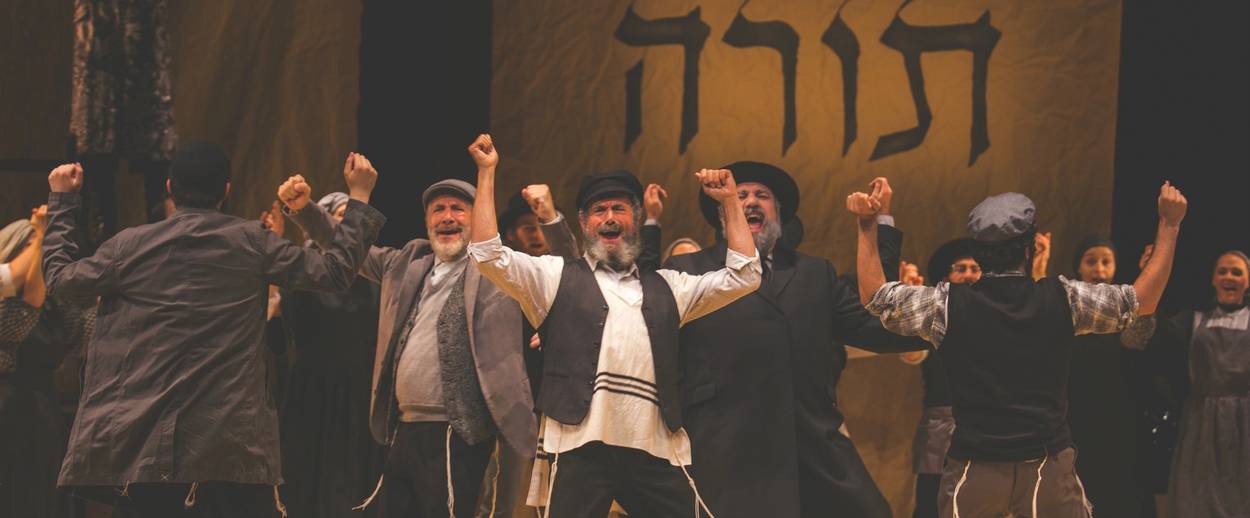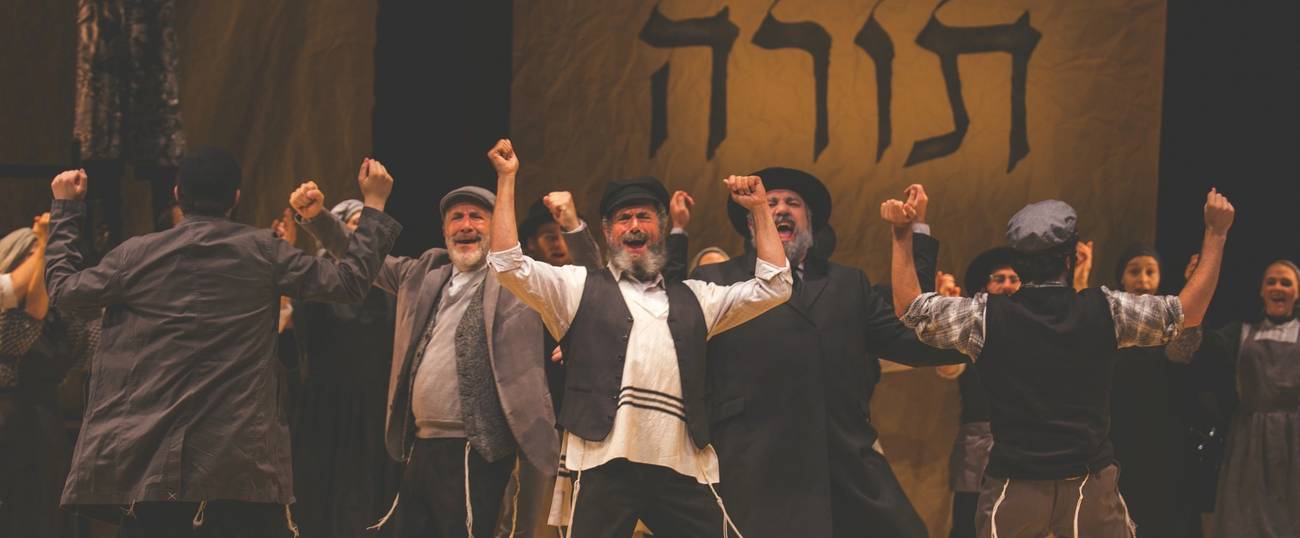A Yiddish Fiddler in New York
A very Jewish production speaks, in its specificity, to the universal experience of being a minority




After much anticipation, the Yiddish-language production of Fiddler on the Roof has made itself a home in New York and is sticking around.
Under the auspices of the National Yiddish Theatre Folksbiene and directed by Joel Grey, this translation by Shraga Friedman actually dates to 1965 but it’s been little-performed since, and this is its American debut.
Watching this production begs the question—what took it so long? While the story in Fiddler is far from representative of all Jewish backgrounds, in its 50-odd years of existence it has become arguably the single most recognizable piece of American Jewish culture. Watching a production of the musical is like going to synagogue, it feels like fulfilling an ancient ritual.
Certainly Yiddish is less mainstream than Fiddler, but hearing the denizens of Anatevka talk and sing in what would have been their first language is undeniably powerful. (If you don’t speak Yiddish, or somehow don’t know the show’s libretto by heart, there are both English and Russian supertitles.)
The cast and creative team have spoken openly about the timing of the production, that a show about a minority being evicted from their home is especially relevant in the U.S. today. But that hasn’t stopped them from creating an unabashedly Jewish production, letting one particular story and people point to the work’s larger themes.
(Pro-tip: A good gauge for examining the Jewishness and attention to detail for a production of Fiddler—Do characters kiss the mezuzah when they enter a room?)
But a Yiddish translation opened the show up to cultural specificity in a way that direction and design could never quite achieve: It changed the Bible that is Joseph Stein’s book. The original text of the show was designed to not frighten off American audiences (down to the awkward use of the word “Sabbath”). In the Yiddish, not only are there more Jewish idioms, but specific references to religious tradition. Tevye’s “Good Book” becomes specific sources, be it specific blessings, the Torah, even Rashi. Tevye even tells Golde that they will sit shiva for Khave. The musical may still be written for American audiences decades after it takes place, but the Yiddish is a vehicle for greater authenticity.
Grey and the rest of the creative team understand that with Fiddler, sometimes less is more—for example, a bare-bones set uses a handful of chairs and tables to create the world of the shtetl. Because the secret to mounting a successful production of Fiddler is love for the story. It’s why Broadway runs have floundered and middle-school musicals have left audiences with tears in their eyes. And the team and cast for this Fiddler (not all of whom are Jewish) seem deeply engaged with the material.
The cast is also on the whole not only enthusiastic but excellent. Steven Skybell’s Tevye has the requisite twinkle in his eye and sense of humor, but there’s a real sadness, even a bitterness to him, that grows stronger over the course of the play. Mary Illes makes a strong, animated, Golde, and all the daughters have strong presences [update: Mary Illes has been replaced in the part of Golde by the actress Jennifer Babiak]. Importantly, all three male suitors are sexy, each in their own distinctive way. (Plus, a special gift for Perchik fans—this production includes “Any Day Now,” his socialist anthem written for, and subsequently cut from, the 1971 film.) And, yes, Jackie Hoffman is predictably on point as Yente.
If you think you’re completely Fiddlered out, give this production a chance to move you. It turns out all it took to make the musical fresh was an old language.
Fiddler on the Roof, which has been extended multiple times, runs through Nov. 18 at the Museum of Jewish Heritage.
Gabriela Geselowitz is a writer and the former editor of Jewcy.com.